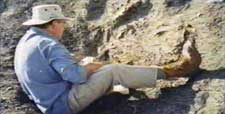
Phil Gingerich began his career 30 years ago. In Geology, he became interested in Paleontology. Gingerich's interest in early land mammals brought him to Pakistan. It was there, he made the kind of discovery most Paleontologist's dream of.
A fossil that would re-write one of Evolution's greatest stories.
"I found the back of a skull, that I couldn't identify. It had a very good, well preserved ear region and that offered the clue to what it was."
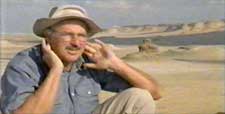
The shape was familiar, but in other ways it was like nothing Gingerich had ever seen.
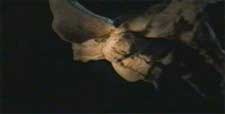
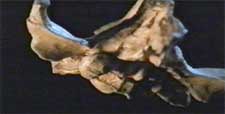
"This is the original specimen, it's the one we found in about 1978. There's several things that strike you. One is that it's very similar in size and shape to the back of a skull of a wolf."
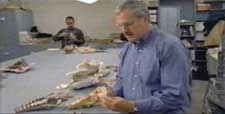
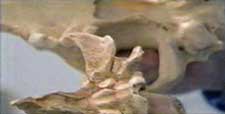
But there was something odd about this skull. On its underside there was a walnut-sized bump.
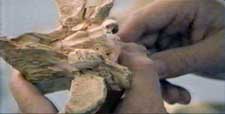
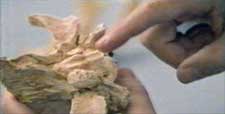
"If this wasn't here I would think this was an archaic carnivorous mammal, what we call a creodont. But it is here."


It was part of the animal's inner ear and it had a distinctive shape, a shape found today in only one kind of animal, whales.
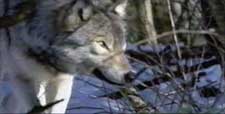
What was the ear of a whale doing on the skull of an animal that resembled a wolf? Gingerich was intrigued so he constructed a model of what the creature's full skull might have looked like. He wondered if his skull was a crucial missing link, the first fossil evidence ever found for one of Darwin's most daring claims, that whales had evolved from land mammals.
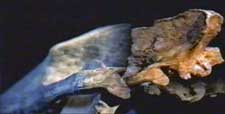
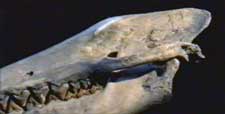
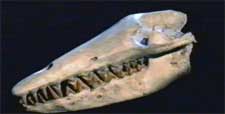
All images and extracts from NOVA, WGBH Boston, PBS Television |